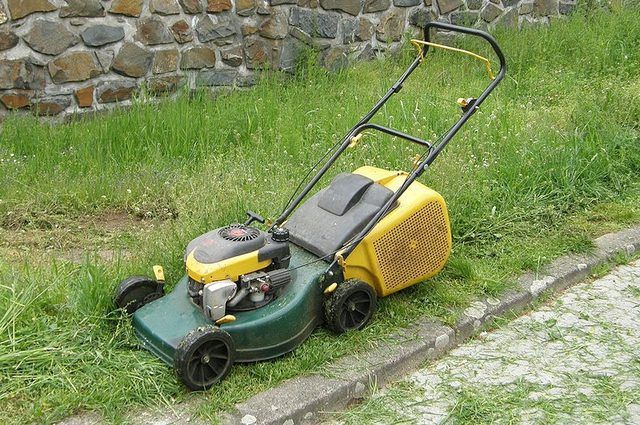Bulbs
Flower Basics
Flower Beds & Specialty Gardens
Flower Garden
Garden Furniture
Garden Gnomes
Garden Seeds
Garden Sheds
Garden Statues
Garden Tools & Supplies
Gardening Basics
Green & Organic
Groundcovers & Vines
Growing Annuals
Growing Basil
Growing Beans
Growing Berries
Growing Blueberries
Growing Cactus
Growing Corn
Growing Cotton
Growing Edibles
Growing Flowers
Growing Garlic
Growing Grapes
Growing Grass
Growing Herbs
Growing Jasmine
Growing Mint
Growing Mushrooms
Orchids
Growing Peanuts
Growing Perennials
Growing Plants
Growing Rosemary
Growing Roses
Growing Strawberries
Growing Sunflowers
Growing Thyme
Growing Tomatoes
Growing Tulips
Growing Vegetables
Herb Basics
Herb Garden
Indoor Growing
Landscaping Basics
Landscaping Patios
Landscaping Plants
Landscaping Shrubs
Landscaping Trees
Landscaping Walks & Pathways
Lawn Basics
Lawn Maintenance
Lawn Mowers
Lawn Ornaments
Lawn Planting
Lawn Tools
Outdoor Growing
Overall Landscape Planning
Pests, Weeds & Problems
Plant Basics
Rock Garden
Rose Garden
Shrubs
Soil
Specialty Gardens
Trees
Vegetable Garden
Yard Maintenance
Why Does a Self Propelled Lawn Mower Stop Self Propelling?
Why Does a Self Propelled Lawn Mower Stop Self Propelling?. Self-propelled mowers use several different drive systems and each can fail in unique ways. Operating conditions and techniques can also affect the drives, with different types of mowers working better on slopes or flats. Lack of maintenance contributes to early drive failures. Overfilling...

Self-propelled mowers use several different drive systems and each can fail in unique ways. Operating conditions and techniques can also affect the drives, with different types of mowers working better on slopes or flats. Lack of maintenance contributes to early drive failures. Overfilling the oil reservoir or spilling oil onto drive mechanisms is one of the most common reasons for trouble.
Mower Type
Front wheel drive mowers are best for flat ground. On slopes an operator tends to push down on the handle and lift the front drive wheels off the ground. Rear wheel drive mowers get more traction from that downward pressure, and many models offer large diameter rear wheels for better stability. Loss of traction on wet ground or slopes is not a fault of the drive system--choose a mower that is designed for the terrain of your yard.
Belt Drives
The very common pulley and belt lawn mower drive easily goes wrong. As belts age they become loose and deform, losing their grip on the drive pulleys. Under load the belts slip and the drive wheels stop turning. Mower drives have a very short mechanical adjustment range for tightening these belts. When slipping becomes frequent, it's time to change the drive belt even if it seems to be in good shape. Over-tightening the adjustment links can damage the machine.
Turntable Drive
Other self propelled lawn mowers use a turntable drive system. Looking something like a phonograph, this consists of a metal drive disc (like the record) and a drive wheel (the needle) that transmits power to the wheels by gears and belts. To change the mower speed the drive wheel is physically shifted to a smaller radius on the drive disc. Any oil or contaminants on the disc will reduce the efficiency of the drive. Increasing the pressure of the drive wheel contributes to early burnout. Clean the disc and drive wheel with engine degreaser if the drive slips.
Wheel Problems
Rear drive self propelled mowers usually have one geared wheel connected to the other drive wheel by a fixed axle and ratchet gear. Less expensive mowers use plastic drive gears, while the better designs use metal gears. The plastic versions are easily ruined by improper operation of the mower. The most common fault is to make a sharp turn with the mower under power, putting extra stress on the drive. This can cause early failures of the gears, treads, and even wheel hubs. Release the clutch before making a sharp turn.
Tips
Abusing the machine is the most serious contributor to self propelled drive failure. If your mower has different speed settings, choose one that mows the grass without putting too much stress on the motor and drive. Keep the blade sharp and clean the mower deck and drive pulleys regularly. Release the clutch before making sharp turns and when pulling the mower backwards.